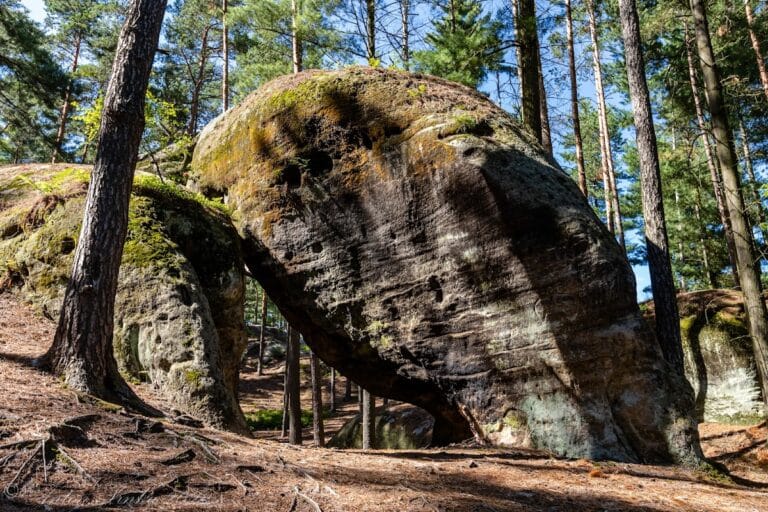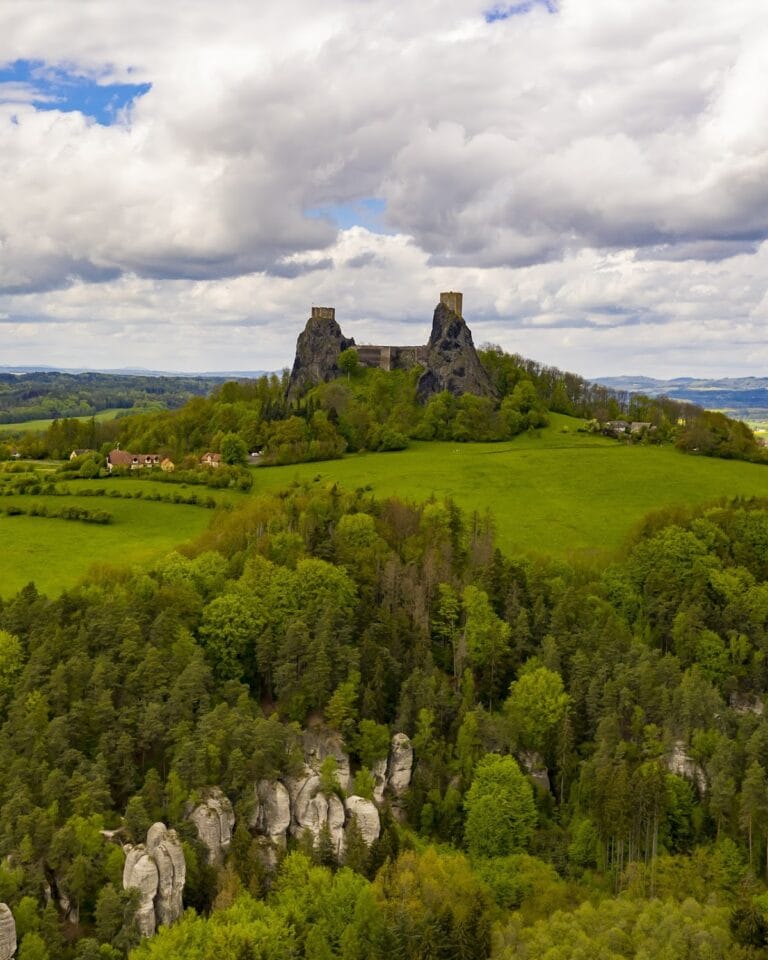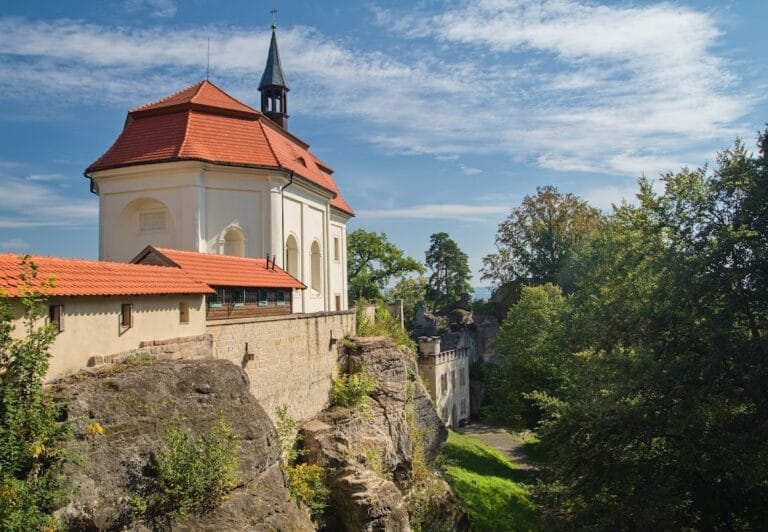Kumburk Castle: A Gothic Ruin in the Czech Republic
Visitor Information
Google Rating: 4.7
Popularity: Medium
Google Maps: View on Google Maps
Official Website: www.kumburk.cz
Country: Czechia
Civilization: Medieval European
Remains: Military
History
Kumburk is a Gothic castle ruin located in the municipality of Syřenov-Lomnice nad Popelkou in the Czech Republic. The site’s strategic position atop a steep hill drew various cultures, beginning with early settlements long before the castle’s construction.
Human activity at the castle hill dates back to the Neolithic era, as shown by pottery linked to the culture with punctured ceramics. Over time, people from the Bronze Age Lusatian culture also inhabited the area, followed by evidence from the Hallstatt period and early medieval times. However, many of the earlier traces were erased when the medieval fortress was built, reflecting the site’s continuous importance through centuries.
The castle itself was established in 1325 by the noble Markvart of Vartenberk, also known by the Germanized name Markwart von Goldenburg. During the early 15th century, the castle came under the control of Hynek Krušina of Lichtenburk, a prominent Hussite commander. He significantly strengthened its defenses and added a palace section. This period marked the castle’s growth into a fortified residence with enhanced military capabilities.
After this, Kumburk passed through the hands of several noble families, including the Berka of Dubá, the Trčka of Lípa, and the Smiřický lineage. By the 16th century, the castle’s function had shifted, serving as a prison rather than as a noble dwelling. During the tumultuous Thirty Years’ War, the castle suffered heavy damage inflicted by Swedish forces, reflecting the widespread devastation across Bohemia. Emperor Leopold I later ordered the demolition of Kumburk in 1658, reportedly because it had become a hostile stronghold.
Following the Battle of White Mountain in 1620, ownership of the site changed multiple times. Notable figures such as Albrecht Wallenstein and Rudolf von Tiefenbach held the property. Subsequently, the Sternberg family acquired Kumburk, and it later passed to the counts of Trautmannsdorff, who maintained it until 1945.
Local legends enrich the castle’s history. Stories speak of noblewomen imprisoned within its walls and of hidden treasure guarded by a fiery-eyed rooster. Ghostly figures are said to haunt the ruins, adding a layer of mystery to the site. The castle also attracted literary attention; the Romantic poet Karel Hynek Mácha visited the ruins, and a memorial plaque commemorates his connection in the upper tower.
Restoration efforts began in the 20th century, with work on walls and towers taking place between 1939 and 1941, aiming to preserve the remaining structures and honor Kumburk’s past.
Remains
The ruins of Kumburk host substantial remains constructed primarily from stone, characteristic of Gothic fortress architecture. The castle climbs the steep hill in a spiral formation, adapting naturally to the topography and creating a layered defensive system.
Among the most notable remnants are the lower parts of the palace. These sections reveal once-fortified living quarters that likely served both residential and administrative purposes during the castle’s peak. The sturdy masonry remains visible today, offering insight into medieval construction techniques focused on durability.
Several towers, although fragmentary, still stand and provide a glimpse into the castle’s defensive architecture. These towers would have originally guarded key approaches and provided elevated viewpoints. The surviving walls, showing thick stonework, once formed strong barriers against invaders and have withstood centuries of weathering despite partial collapse.
The outer fortifications were expanded in the early 15th century under Hynek Krušina of Lichtenburk, reflecting the castle’s military importance during the Hussite period. These additions included reinforced walls and strengthened gate areas, designed to deter attackers and protect the inhabitants.
Kumburk’s elevated location, at 639 meters above sea level, offered commanding views over the surrounding countryside. From what remains, a lookout position could observe neighboring villages such as Úbislavice and Zboží, the town of Nová Paka, the distinctive landscape of the Bohemian Paradise, and the distant Krkonoše mountains. This panoramic vantage point was a crucial strategic advantage.
A memorial plaque dedicated to poet Karel Hynek Mácha is installed in the upper tower, linking cultural heritage to the physical ruins. This detail highlights the castle’s significance beyond military and residential functions.
Today’s ruin is part of a protected cultural monument and is accessible via marked hiking trails, which pass below or start near the site. When compared to nearby castle ruins like Bradlec, Kumburk retains a larger portion of its original structure, especially in the palace foundations and tower remains, making it a valuable historical record of Gothic fortification in the region.







